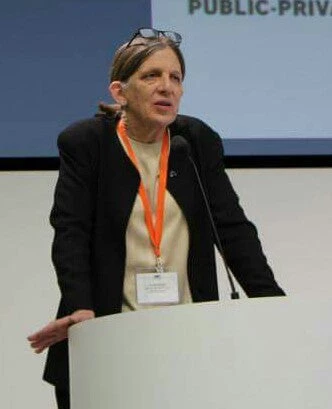
“I wish that I had had this [report] when I started. . . . It has some great things that we found out over a long period time – in many cases, through trial and error. And so, when I read it, I said, 'Wow, we are doing these things, but it did take us awhile to buy into these things.' It is going to be very informative to cities around the worlld.”
– Tracey A. Nichols, Director of Economic Development, City of Cleveland
The World Bank Group launched the Competitive Cities report on December 10 – “Competitive Cities for Jobs and Growth: What, Who and How,” which represents almost two years of research and analysis to put together a reliable, comprehensive and unified body of work. It is aimed primarily to help cities formulate and implement economic development strategies, and it is intended to be used by city leaders themselves.
The report was launched jointly by the senior directors of two Global Practices at the Bank Group: the Trade and Competitiveness and the Social, Urban, Rural and Resilience practices. The roundtable discussion included academics, policymakers, senior World Bank advisors, and representatives from the private sector. The Bank Group's stately Old Board Room was filled to overflowing, and the audience was particularly appreciative of the video animation summarizing the central ideas within the Competitive Cities report. The twitter feed associated with the event (#competitivecities) was inundated with live tweets. Supportive analyses in the news media – for instance, in the Huffington Post by Marcelo Giugale and at CityLab by Richard Florida – focused supportive news coverage on the event.
The launch of the report is much more than a flash in the pan. The report itself is only the start: What follows is the rollout, the active dissemination to regional task teams and city leaders, and the setting-in-motion of the findings of the report, which focuses on sub-national growth and job creation. These are some of the events we have planned:
- Events in the various World Bank Group regions, to share the general framework and also to customize the findings of relevance to each specific region. So far, we are considering events in Singapore, Sydney, Dar Es Salaam and potentially cities in the Middle East, North and West Africa, and in the Caribbean. If your city is interested in hosting a regional event, we would be pleased to hear from you.
- A three-day interactive executive training course on competitive cities, which is aimed at city mayors and economic development advisors to cities.
- An operational guide to help configure competitive cities into World Bank lending projects and advisory services, including deep dives for regional and country task teams. Let us know if you’re particularly interested in hosting such a training session in your region.
The team has come a long way in writing this report and its eight companion papers. We set out to find answers to questions that our sub-national clients often pose to us – such as, “How can I create jobs and growth in my city?” and “What should my development priorities be?” and “How do I get things done?” The Competitive Cities Report provides some answers. While there are no easy solutions and no "silver bullets," we now have a better-stocked toolkit to tackle the challenges faced by our clients.
“This [report] seems like a natural outflow from the World Development Report 2009. . . . [That report in] 2009 was a huge step in getting us towards thinking more about cities. What is really nice about this report is that it is the next step on this journey [of trying to understand] how we should be structuring decision-making to try to drive forward this [economic development of cities] agenda.”
– Professor Henry Overman, London School of Economics; Director, What Works Centre for Local Economic Growth
The team would like to express our gratitude to the supporters of the Competitive Cities initiative, the Competitive Industries and Innovation Program (CIIP).


Join the Conversation